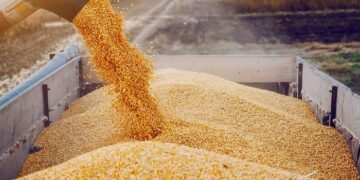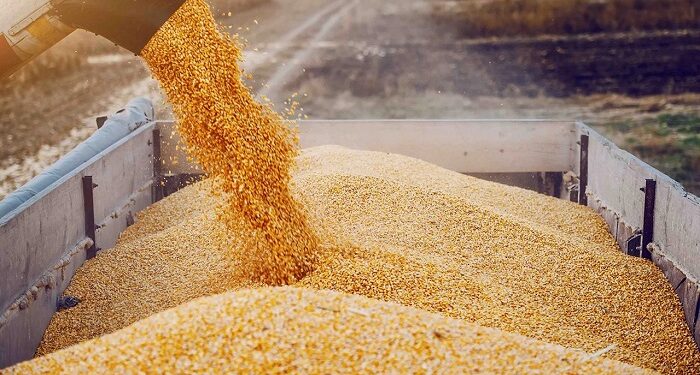Grain is one of the most crucial components of the global food supply, essential for human consumption, livestock feed, and numerous industrial processes. The global grain market, which includes wheat, corn, barley, and rice, is dominated by a few key players who supply these staples to many countries worldwide. In this article, we explore the top three grain-exporting countries that play an essential role in ensuring global food security.
1. The United States: The Largest Grain Exporter
The United States consistently ranks as the largest grain exporter in the world, with its agricultural industry contributing significantly to global food supplies. America’s vast agricultural land, advanced farming techniques, and supportive infrastructure enable the country to produce an impressive volume of grain annually.
Wheat and Corn Powerhouse
Two of the most critical grains that the United States exports are wheat and corn. The country leads the world in corn production, supplying over one-third of the global corn trade. Corn is used not only as food but also as feed for livestock, biofuel (ethanol), and various industrial products.
Wheat, another staple, is grown across many states, including Kansas, North Dakota, and Montana. The United States is one of the top wheat producers and exporters, consistently supplying countries in Asia, Europe, and Africa.
Advanced Farming and Trade Networks
The U.S. owes its position as the largest grain exporter not only to favorable geographic conditions but also to its advanced technology in agriculture. American farmers use state-of-the-art machinery, genetically modified crops, and precision farming techniques, which help maximize yields and maintain production even during difficult weather conditions.
Furthermore, the country has developed an extensive logistics and trade network. American ports, primarily along the Gulf of Mexico, ensure easy access to global shipping routes, facilitating efficient grain exports to distant markets.
2. Brazil: A Rising Agricultural Superpower
Brazil is another major player in the global grain market, having transformed itself into one of the largest grain exporters in recent years. With its vast agricultural areas, the South American country has rapidly expanded its grain production, particularly for soybeans, corn, and wheat.
Soybean Leadership and Corn Growth
Brazil has become the world’s largest exporter of soybeans, surpassing the United States in recent years. Soybeans are one of the most valuable crops in global agriculture, used primarily for animal feed, cooking oil, and biodiesel production. China’s high demand for Brazilian soybeans has significantly boosted Brazil’s standing in the international grain market.
While soybeans dominate Brazil’s agricultural exports, the country is also making strides in corn production. Corn, second only to soybeans in export volume, has seen rapid growth, driven by rising global demand and favorable domestic farming conditions.
Government Support and Land Availability
The Brazilian government has played a critical role in promoting grain exports through various policies and investments. Financial incentives, infrastructure development, and research into sustainable farming have all contributed to making Brazil one of the most important grain suppliers worldwide.
Additionally, Brazil has one of the largest reserves of arable land globally. The country’s tropical climate, combined with ample land availability, allows for multiple harvests annually, which is a significant advantage in increasing grain output.
3. Argentina: A Grain Exporting Giant in South America
Argentina is another leading grain exporter, known for its high-quality agricultural products and strategic position in the global market. With its favorable climate, fertile soil, and well-established farming tradition, Argentina consistently ranks as one of the top grain exporters, particularly for wheat, corn, and soybeans.
Wheat and Corn Production
Argentina is renowned for producing some of the highest-quality wheat in the world. The country exports wheat primarily to Brazil, as well as other nations across South America, Africa, and Asia. Argentine wheat is highly regarded for its protein content and milling characteristics, making it a sought-after commodity in the international market.
Corn is another essential grain that Argentina produces in vast quantities. The country benefits from the fertile Pampas region, which provides ideal conditions for growing both corn and wheat. In recent years, Argentina has seen a rise in corn exports, driven by increased productivity and growing demand from Asia and the Middle East.
Economic Importance of Grain Exports
Grain exports are vital to Argentina’s economy, contributing significantly to its foreign exchange earnings. The agricultural sector is a cornerstone of the Argentine economy, and the country relies heavily on its grain exports to maintain a positive trade balance.
Moreover, Argentina has been actively working on improving its export infrastructure. New investments in ports, storage facilities, and transportation networks have helped streamline the grain export process, allowing the country to remain competitive in the global market.
The Importance of Grain Exports for Global Food Security
The top grain exporting countries—namely the United States, Brazil, and Argentina—play a crucial role in stabilizing global food supplies. Grains such as wheat, corn, and soybeans are staples in many diets and form the backbone of livestock feed, biofuel production, and a range of industrial applications. The largest grain exporter nations provide not only food security to importing countries but also ensure price stability in the international grain markets.
Challenges Faced by Grain Exporting Nations
Despite their strong position in the global market, the largest grain exporters face several challenges. Climate change is a significant concern, as unpredictable weather patterns can disrupt production cycles and lead to shortages. Prolonged droughts, floods, and extreme temperatures have already affected grain yields in various parts of the world.
Additionally, geopolitical tensions, trade disputes, and protectionist policies can impact the flow of grain exports. Tariffs, trade barriers, and sanctions could limit market access for exporters and destabilize global supply chains.
Conclusion
The United States, Brazil, and Argentina remain the world’s top grain exporters, supplying essential crops to markets across the globe. As the largest grain exporter, the United States dominates corn and wheat exports, supported by advanced farming techniques and a robust trade infrastructure. Brazil has emerged as a leader in soybean exports while also expanding its corn production, and Argentina continues to be a major player in wheat and corn exports.
These countries are vital to global food security, providing billions of people with essential grains. However, they must navigate challenges such as climate change and trade disruptions to maintain their leading positions in the global market. As the demand for grain continues to grow, these nations will undoubtedly remain central to the future of global agriculture.
































